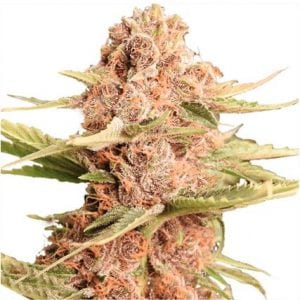THC and CBD are the most prevailing composites in cannabis, but we should know that there are extra equally attractive (though lesser-known) cannabinoids in this magical plant. Explore this fantastic article to learn about THCV’s role in marijuana and how it can help appetite suppression and pain management. Also, browse through the best cannabis strains that contain a high level of THCV.
When discussing the best cannabis strains with high THCV, the cannabis strain that comes to mind is the Durban Poison Cannabis Strain, Checkout official website.
We chose to learn more about tetrahydrocannabivarin (THCV), an uncommon exacerbate that is just available in trace amounts of marijuana. And not just any kind of marijuana.
Different lab results have shown that higher THCV levels can be discovered uniquely in some Sativa dominant strains from Southern Africa and Afghanistan.
And we have assembled a list of high THCV cannabis strains at present available. THCV enthusiasts generally allude to THCV weed as “skinny pot.”
But before that, we will guide you through a quick recap of continuous researches on THCV and potential medical benefits and impacts of this potent cannabinoid on the consumer.
Δ9-Tetrahydrocannabivarin (THCV)
Contents
THCV is a minor cannabinoid found in just some strains of cannabis. THCV and THC’s main structural difference is the presence of a propyl (3 carbon) group, rather than a pentyl (5 carbon) group, on the particle.
THC (Tetrahydrocannabivarin) is a homolog of tetrahydrocannabinol with a propyl side chain instead of a pentyl group on the molecule, making it produce very different effects from THC. (Source: Wikipedia) Formula: C19H26O2 Molar mass: 286.41 g/mol Routes of administration: Oral, Smoked, Inhaled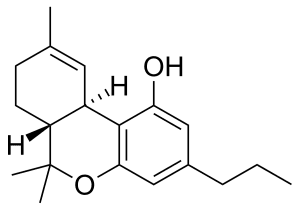
Though this variety may seem subtle, it causes THCV to produce very different effects than THC. These effects include a reduction in alarm attacks, suppression of appetite, and bone growth promotion. THCV acts as an antagonist at the CB1 receptor and a fractional agonist at the CB2 receptor.
How does THCV occur?
THCV’s chemical structure is similar to THC, but it arrives from an entirely different antecedent. While most cannabinoids, such as CBD and THC, are the byproducts of CBGA (cannabigerolic acid) synthesis, while THCV is the final product of CBGVA (cannabigerovarin acid).
Moreover, CBGV converts to THCVA, which eventually becomes THCV when exposed to warmth or light. You can find THCV in pure Sativa strains in Africa, China, Nepal, Pakistan, India, Thailand, and Afghanistan.
THCV: Here’s what research says
THCV is a chemical compound in marijuana that has a similar sub-atomic structure as THC (tetrahydrocannabinol), missing only a couple of carbons to be just similar to its much famous “chemical cousin.”
But there is a notable distinction between the THCV and THC, especially in the effect that they produce. Depending on the sum taken, THCV can act the same as THC, or act differently. Have a look at Image-1 to understand the Metabolic, Glycomic, and Lipidemic effects of THCV on human studies and animal studies.

Some researchers state that lower doses of this potent cannabinoid make it an antagonist of the cannabinoid receptors. It implies that THCV is not psychoactive in those circumstances. Moreover, it suppresses the psychoactive effect of THC.
Then again, at higher doses, THCV can act as an agonist and produce not just similar, but significantly stronger high than THC. Some individuals accept that the additional uplifting but perceptive buzz that some Sativa weed produce is the result of “THCV force.”
Another essential attribute of THCV-rich weed is the quick energy strike after just two or three puffs, which lasts about a large portion of the span than that of the THC high. That is why an eminent Californian testing lab calls it “the sports vehicle of cannabinoids.”
If you utilize a vaporizer, you should remark that THCV has a high boiling point of 428°F (220 °C), while THC boils at 315 °F (157 °C). Thus, if you need to experience this precious substance utilizing vaping, you should prepare your gear when adjusting your vaporizer’s temperature.
How does THCV react with the human body?
Like cannabinoids such as THC, CBD, and others, THCV gives therapeutic results through cooperation with chemical receptors in a body. The two essential chemical receptors are CB1 and CB2, the primary receptors of the Endocannabinoid System (ECS).
This system is included in regulating a broad range of our body’s functions required for ideal health. CB1 receptors are discovered throughout the body but are stored in the brain and nervous system. CB2 receptors are more widespread in the safe system.
THCV and THC are similar in molecular structure and psychoactive properties, but their effects are complex and different. THCV is technically a psychoactive substance; it can get you that cerebral ‘high.’ However, researchers, having performed a limited study, aren’t entirely sure. After all, the relationship between cannabis and science is… well… COMPLICATED!
THCV works as an antagonist to CB1 receptors at a low dosage, which can obstruct some of THC’s reactions, such as the munchies and cerebral highs. At a higher dosage, THCV stimulates both the CB1 and CB2 receptors and shows effects that nearly match THC. It results in enhanced euphoric and cognitive influences along with the therapeutic usefulness.
Medical benefits of THCV
Researchers praise THCV for its several medical benefits. Some are scientifically-sponsored, some need further testing in studies with a more extensive range of participants.
Here is a list of credible medical benefits of THCV:
- The Journal of Neuropsychopharmacology suggests that THCV might be a useful weight-loss compound because it improves connectivity in the areas of the brain in individuals with obesity. This research supported THCV for weight loss but didn’t support the appetite-suppression theory.
- THCV is also gainful in diabetes treatment. Some research suggests that this cannabinoid can lower blood sugar by improving a patient’s insulin resistance.
- Bone growth and protection: THCV showed the ability to slow or even prevent specific forms of bone degradation because of its ability to bind with receptors situated in the skeletal endocannabinoid system. This cannabinoid might promote the growth of new bone cells.
- Its anticonvulsant properties can treat the symptoms of neurodegenerative diseases. Such diseases include Alzheimer’s or Parkinson’s disease.
- Moreover, research indicates that THVC could reduce the recurrence and severity of seizures when they happen. A study in the Epilepsia diary found that THCV worked when taken before and during seizures as a preventive step.
- THCV, together with cannabinol, cannabidivarin, cannabidiol, and THC, may help in bone growth.
- THCV’s antipsychotic effects lessen anxiety attacks and potentially improve the symptoms of schizophrenia.
- It has mitigating qualities and can be gainful as a pain treatment (together with THC and CBD)
Importance of THCV in cannabis
The words to explain the cannabis industry’s such a next significant ingredient are energy-boosting and weight-loss supplements.
Right now, hardly any strains in the market produce significant THCV, so there are a market gap and an opportunity, according to statistical surveying firm Benzinga, to be one of the first companies to showcase high-THCV strains or extracts.
THCV is a product that invites individuals of all kinds to give it an attempt, especially those who have never attempted cannabis because they dread the high and the munchies characterized by THC.
In contrast to its intoxicating cousin, low THCV levels provide high energy, mental clarity, and appetite-suppressant qualities that may tempt us. Its ability to attract the more large horde of customers is a huge benefit.
Does THC dissolve in water?
Naturally, THCV is just soluble in oil-based liquids and does not dissolve in water. Science has a solution, and it’s called nanoemulsions (more on that in our water-soluble cannabinoids blog). Through cutting edge mechanical processes, THCV can break down into nanoparticles that effectively dissolve in water.
The boiling point of THCV
THCV’s boiling point is 428 degrees Fahrenheit, 114 degrees higher than THC. As a result, you can prepare edibles at a higher temperature.
However, there’s a difficulty with this method because cannabinoids and terpenes begin to vaporize over 245 degrees Fahrenheit. Thus, you may significantly lose out on flavor and effects. On the plus side, it makes things more comfortable if you need nothing but THCV in your edibles.
Extracting THCV
While THCV is considerably more expensive to extract because of lower levels of it found in plant biomass, the process is mostly the same. Like other cannabinoids, you can extract THCV through a chromatography process that uses superfluid fluid solvents such as ethanol or CO2 to depart the plant’s composites.
The extract is then steamed with heat under a vacuum to discharge all the gas, and that gives a high-purity THCV concentrate. Once you get the extract, you should store THCV products at room temperature and away from direct sunlight to preserve its power.
Does THCV make you HIGH?
As we just perceived that THCV is a non-intoxicating substance, some experts state that this cannabinoid has significantly complex effects than CBD, CBG, and other non-intoxicating cannabinoids. While THCV doesn’t make you hallucinate or get skeptical, it certainly presents a more euphoric or “head-changing” impression than other cannabinoids.
Therefore, numerous users who enjoy the pleasant effects of THC while lamenting the side effects of this famous cannabinoid go to THCV as another option. THCV offers many of the pleasing effects of its atomic cousin without providing a feeling of full intoxication.
Some anecdotal data suggests that THCV could act similarly to CBD by reducing THC’s intoxicating effects when using these two cannabinoids. If you’re a THC user, but you don’t care for some of the effects of this intoxicating cannabinoid, adding some THCV to your routine might be just the thing.
The market of THCV
Price of THCV
THCV is at present expensive cannabinoid since it is still a lot rarer to find and has lower yields on average. According to David Lampach, 35% THCV unrefined sells for about $30,000 per kilogram while distillate hovers at around $40,000 per kilogram.
Legality of THCV
Although THCV looks molecularly indistinguishable from THC, it acts uniquely in the body and is not a scheduled drug in the USA. THCV is federally legal as long as you extract it from hemp plants that contain less than 0.3% THC. THCV is also legal in all cannabis strains at a state level where medical and recreational usage is legal.
Since you have learned a little more about THCV, it is ideal for introducing strains with better than expected content of this uncommon compound.
Top 10 best cannabis strains containing high THCV
If you’re interested in (THCV, it’s a minor cannabinoid, gaining lots of attention for its various impacts and possible therapeutic value. You must be wondering which cannabis strains have a high concentration of THCV.
This specific cannabinoid is most prominent in strains local to Asia and Africa. With the booming interest in the cannabinoid, more strains are being explicitly cultivated for their higher-than-average THCV content.
To give you a thought of which marijuana varieties produce this interesting compound, here we highlight ten cannabis strains with high THCV.
1 – Durban Poison
This THCV-rich strain got its name because of its origin from Durban’s port city in South Africa. It was introduced to the USA in the 70s’ by Ed Rosenthal, one of the earliest international strain hunters.
The THCV content in Durban Poison is lower than in Doug’s Varin (about 1%), although it is one of the most famous high-THCV strains available to date.
Durban Poison suppresses appetite and produces energizing effects of a classic Sativa. It has a fruity flavor and sweet smell. Besides, it is an astounding option for users searching for high potency and productivity.
2 – Jack the Ripper (JTR) by Seedsman
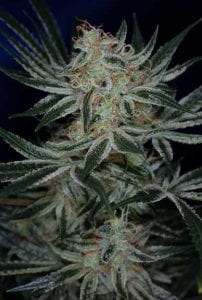
With such a fearful name (after a nineteenth-century serial killer), weed smokers would expect nothing less than a killer influence. And they won’t be disappointed with this strain. This Sativa-dominant combination (70-30 Sativa-Indica) is highly thriving cannabis of Jack’s Cleaner clone and a male version of Space Queen, often mentioned to as Space Dude.
Its effect is delightful in a wide range of settings, where a user can party late or go about finishing daytime tasks without consideration in the world.
It is not unusual to experience intense visual stimulus with this strain, so novice users may feel distrustful and afraid if they go too distant in blowing trees. Jack the Ripper is an unusual THCV-rich strain that has become amazingly famous in a short period.
3 – Pineapple Purps
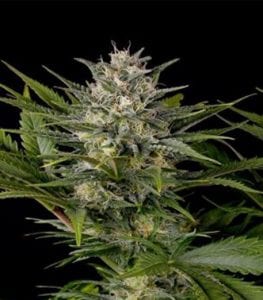
Pineapple Purps is famous as “Super Sativa” because of euphoric, energetic, and low-anxiety effects it renders. It can boast of a high THCV profile almost instantly. According to laboratory studies, the THCV piece in the flower’s dry weight can reach 4%.
Pineapple Purps is a novel strain that can express a THC-THCV proportion of 3:1. It is a highly psychoactive and energetic strain. However, its effects usually won’t last as it has moderate THCV content.
4 – Willie Nelson by Pacific Seed Bank

This Sativa strain got its name after the famous country musician and a long-time weed advocate, Willie Nelson. He presumably attempted it once and immediately bought the whole first yield.
Willie Nelson is a hybridized Southasia Sativa and Highland Nepalese landrace strain. Willie Nelson, the winner of the Best Sativa award in the 2005 High Times Cannabis Cup, has gained popularity among medical and recreational cannabis users.
The effects are similar to any traditional Sativa weed. It is a perfect wake-and-bake strain that induces euphoric cerebral high and desire for social interaction. Although Willie Nelson has over the-average THCV content, we couldn’t find reliable information on the actual THCV level.
5 – Girl Scout Cookies by ILGM
GSC (Girl Scout Cookies) is a wonder of two immensely well-known strains: Durban Poison and OG Kush. It is no surprise that GSC got the same adoration after its introduction to California’s cannabis advertising in 2012.
GSC got numerous Cannabis Cup awards in its short period and got one of the most praised hybrids worldwide. It is nearly 60% Indica and 40% Sativa, but the substantial influence this strain provides after smoking is more like Sativa!
The high you gain from this weed will hook you up straight away, and it is an unprecedented combination of euphoria and relaxation at the same time.
Because of the high degree of THC and traceable measure of THCV (thanks to Durban Poison origins), GSC has been equally mainstream among medical and recreational users.
6 – CB Dutch Treat from Crop King Seeds
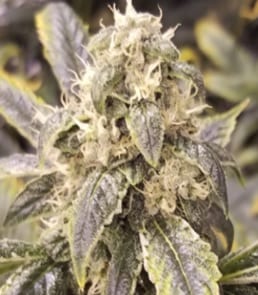
Dutch Treat is also famous as the Dutch Crunch, an Indica-dominant cross strain, which remains an essential part of any proper Amsterdam coffee shop.
Its precise lineage is a complete riddle, but some say that the legendary Canadian cross breeder Jordan of the Islands had grown it first. Despite the Indica predominance, this strain induces a perfect balance of bliss and relaxation.
Dutch Treat renders an instant energizing, cerebral effect that doesn’t usually last long. Don’t fret if the effect doesn’t last long because the usual effect of any THCV-rich strain remains for a short period only. Moreover, this cross-strain weed offers a feeling of profound physical relaxation and peace.
7 – Malawi Gold (or Chamba) by Seedsman

Here comes a unique 100% landrace strain from Malawi, which a landlocked country in southeastern Africa. It is locally known as the most promising strain for its effective execution. Local people know this weed as Chamba, but internationally people call Malawi Gold, which is famous among pot smokers for its potent and uplifting high.
Contrary to the Durban Poison, this strain is somewhat challenging to find in the Western Hemisphere. It is mostly harvested in the Northern region of Malawi (but mainly exported to other regions, mostly Europe). Because of its roots, it’s excellent amongst other cannabis in the world.
Although cannabis in Malawi remains illicit, this harvest tends to be one of the prime export commodities of Malawi, with a predicted value of 0.2% of Malawi’s GDP. There is no reliable lab information to give us the precise concentration when it comes to THCV content of this celebrated strain.
However, it has been assumed that THCV content in Malawi Gold is as high as Durban Poison. If you are blessed enough to cross your path with this strain, we would be delighted to hear your thoughts on your experience with this appealing weed strain.
8 – Red Congolese by Pacific Seed Bank
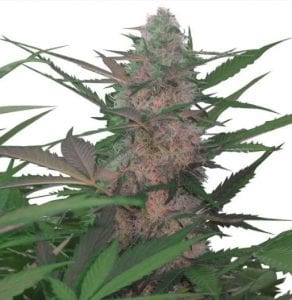
The source of this strain remains doubtful. Some claim that Red Congolese is an African Sativa landrace, while some believe it has Mexican and Afghani origins that give it more Indica-like features.
Today, this cannabis strain is one of the most mainstream among other high-THCV options. Individuals choose it for weightless euphoria that promotes focus and mental clarity.
With its energizing qualities, Red Congolese is an excellent weed for morning regimen. It is also beneficial in nausea, tension, cachexia, or Alzheimer’s disease. Besides other options in this list, Red Congolese can help with depression, stress, and fatigue. In some cases, it is also useful for pain help.
9 – Doug’s Varin by Seedsbay
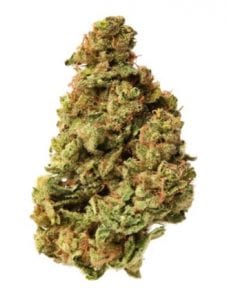
If you haven’t found out about this strain before, you are not the only one. Doug’s Varin is a different, premium Sativa strain that breeders grow for high THCV content.
The strain is one more descendant of Durban Poison, only a couple of more African strains have been blended in the process: Malawi Gold, Swazi Landrace, and other strains that remain a “botanist’s secret!”
This strain started appearing in the cannabis showcase since 2013, following more than 40,000 iterations that led to this THCV powerhouse’s growth. Interestingly, it holds 3% THCV, which is the most available THCV concentration in one strain.
Doug’s Varin has a dusty, citrus fragrance, and it renders energizing cerebral influence that doesn’t usually last long.
If you are looking for a weed product that holds the highest degree of THCV, look no further. Moreover, Doug’s Varin would be a great option with vape pens.
10 – Pink Boost Goddess by Emerald Spirit Botanicals

Pink Boost Goddess is a unique, THCV-rich strain from Emerald Spirit Botanicals. The strawberry-rosewood aroma and luscious cream will lure you into its peaceful, blissful universe – offering a smooth psychedelic high that’s both energizing and euphoric. Moreover, it is said to leave users feeling relaxed.
Pink Boost Goddess is also appreciated for its healing benefits. It can suppress appetite and provide neurological advantages like lessening anxiety due to its unique terpene and cannabinoid profile.
According to SC Labs, this past harvest provided us with the highest testing THCV cultivar, which tested over 70,000 cultivars. Emerald Spirit Botanicals is a Sun+Earth Certified farm in Mendocino county. The company ensures that they grow marijuana by providing it the proper sunlight, without chemicals by fairly-paid growers.
Final Verdict
THCV can be found richly in Sativas, especially land-race strains like Durban Poison. If you’re shopping for THCV, you can also ask around for isolations of the THCV cannabinoid, in products like tinctures and oils.
Over the long haul, we come to know more of THCV’s medicinal properties. However, THCV’s main medical benefit has fascinated numerous individuals and continues to do so by its appetite-suppressing properties.
After all, there’s an indispensable potential for how THCV could positively impact individuals’ lives, especially those who need help controlling their appetite and food consumption.
The ban on cannabis in some countries hinders scientist’s experiments from conducting more in-depth research on THCV. As our overall perception of the various cannabis compounds progress, we’re uncovering the complexities of this historically misinterpreted herb.
Do you believe that the use of cannabis with THCV-rich profile will rise in the years to come? Stay tuned to uncover how THCV advances and evolves, and how it’ll remain one of the most desired elements in the cannabis industry.
Content on this guide is intended strictly for informational purposes. We do not promote any product or represent that the products mentioned in this article are a treatment for any medical condition. Furthermore, we cannot guarantee that information furnished is error-free or perfect and is not liable for users’ actions. We do not endorse any user reported information, any particular strain, product, producer, organization, treatment, or therapy. We do not make representations regarding the use of cannabis and do not provide any of its views on the usage, benefits, or promotions.Disclaimer:


